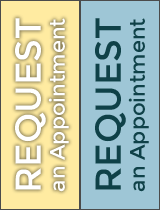How Do At-Home Sleep Apnea Tests Work?
November 1, 2023

Sleep apnea is a common condition that affects millions of patients worldwide, robbing them of precious sleep! What’s worse is that countless more cases remain completely undiagnosed and untreated. However, before you can treat your condition, one step you’ll need to undergo is taking an at-home sleep test. Here’s what you can expect throughout this process and some things you can do to prepare yourself for your sleep apnea screening.
What Is an At-Home Sleep Test?
Sleep apnea treatment begins with diagnosis, meaning determining the cause of a patient’s sleep disruption. This can be done at a specialist’s office, or it can be carried out at a patient’s home using a special at-home sleep apnea test. This test isn’t something that you can buy yourself; it’ll have to be prescribed to you, often after answering a questionnaire about your symptoms or attending a consultation.
It will include a monitoring device with multiple sensors attached, including a small probe that’s worn over your fingers and measures your oxygen levels as you sleep. A breathing mask is also included, which is secured over your nose. There are also other sensors placed on your chest and abdomen to measure their movement as you rest.
You’ll be instructed on how to attach the sensors to your body and how to operate the monitoring device. As you sleep, it will keep track of your oxygen levels and breathing patterns. By the time you wake up, it will have gathered enough data to determine if sleep apnea is influencing your sleep—and then treatment can commence!
How Should I Prepare for an At-Home Sleep Test?
To put it simply, following your regular routine as best as you can is arguably the best way to go about your at-home sleep test. There aren’t any special preparations or accommodations that you need to make in advance; just set up the device once you’re ready for bed, as per the instructions!
If you’re concerned about not being able to fall asleep on the evening of the test, avoid taking any daytime naps, drinking caffeine or other stimulants, or doing anything else that might disrupt your normal sleeping patterns. You should also try to sleep in the same position that you would on a normal night.
It might seem a little complicated and frightening, but an at-home sleep test is actually a relatively small and straightforward commitment—and it’s usually for just one night! Completing your at-home sleep apnea test will bring you one step closer to receiving sleep apnea treatment and getting back to bed!
About the Practice
Weatherford Dental Sleep Medicine has served patients in the Weatherford community for several years under the leadership of Dr. Deborah Romack and her talented team. If you have any questions about the article or you’d like to arrange a visit for you or someone you know who suffers from sleep apnea, you can contact the practice online or by phone for assistance. Telephone: (817) 594-3806.
No Comments
No comments yet.
RSS feed for comments on this post.
Sorry, the comment form is closed at this time.

